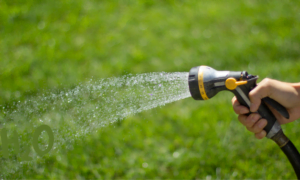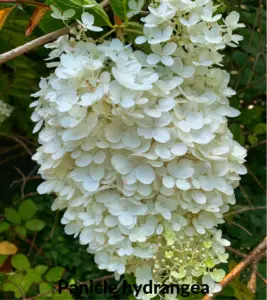Flowers play an immense role in beautifying nature. The hydrangea is a color-changing flower. I first saw it in a nursery. As soon as I saw the flower, I was fascinated by its beauty. Since then, I decided to create a garden of these flowers. I had to take several steps to cultivate this flower and achieve good results. This flower can be grown on the terrace or in the garden.
| Botanical | Hydrangea asp |
| Family | Hydrageaceac |
| Plant Type | Shrub |
| Mature size | 2-20 feet tall by 2-6 feet wide Sun exposure is partial |
| Soil type: | Moist well drained |
| Soil ph | Acidic, neutral, alkaline. |
| Bloom Time | Summer and Autumn |
| Native area | America |
| Flower color | white, blue, pink, red, green |
| Toxicity
Hardiness |
Toxic to pets
5-9 (USDA) |
Types of Hydrangea:
There are more than seventy species of Hydrangea. Four different types of Hydrangea are grown in the United States.
Oakleaf Hydrangea

Oakleaf Hydrangea grows in warm regions. Hydrangea are a great choice if you live at altitude, as they are summer-capable
Bigleaf Hydrangea

Bigleaf hydrangea is the most common. They are seen to grow from 5 to 9 people.
Sure, there’s a human-like and Google-friendly revision of your text:
—
**Panicle Hydrangea**
Panicle Hydrangea can grow up to fifteen feet tall and thrives in hardy zones.
**Mophead Hydrangea**
Mophead Hydrangeas, nicknamed “snowballs” for their abundant clusters of large white flowers, thrive beautifully in cooler climates.
**Mophead Hydrangea**
It is characterized by large round flowers.
**Lacecap Hydrangea**
Lacecap Hydrangeas have large flowers surrounded by tiny buds, giving them a lacy appearance.
**Where to Plant Hydrangeas**
Knowing where to plant hydrangeas is crucial. I planted my hydrangea plants in my side garden. Many people plant them in rooftop containers. They prefer warm morning light but dislike afternoon heat. The ideal location is in a spot that receives morning sun and is sheltered from the afternoon heat. Planting on the north or south sides of the house is advisable to avoid direct competition for nutrients. Strong winds can damage leaves and cause flowers to wilt.
**Best Time to Plant Hydrangeas**
The best times to plant hydrangeas are fall and early spring, preferably in the morning or afternoon. Ensure plants are well-watered until established, especially protecting them from excessive heat during cooler parts of the day.
Light

Hydrangeas thrive in smaller spaces, so ensure there is adequate room for their growth. Place hydrangeas where they receive five to six hours of morning sunlight followed by dappled shade. If you reside in a hot summer region, opt for a spot with two to three hours of morning sun and partial shade in the afternoon. This balance of sunlight helps hydrangeas flourish without being overwhelmed by heat.
Water

Hydrangea flowers, like water, should be kept moist but not soaked. Overwatering can lead to fungal attacks, and the plant may stop flowering. Check the soil daily to see if it needs watering—insert your fingers an inch or two deep, especially in the morning, to ensure the soil is neither too dry nor too wet.
Fertilizer

If the soil where you plant hydrangeas is well-drained, these flowers don’t need much additional watering. Using a balanced 10-10-10 fertilizer can help hydrangeas produce vibrant flowers. Apply the fertilizer in spring when new leaves start to emerge, spreading it in a wide circle around the base of the plant, reaching out to where the branches extend. This method ensures the plant receives the nutrients evenly for healthy growth and blooming.
**Place of Origin of Hydrangea Plants:**
Hydrangeas are typically found in colder countries such as Asia, America, China, Japan, and Korea.
**Hydrangea Flower Color Variation Based on Soil pH:**
The color of hydrangea flowers changes depending on the soil pH:
– pH 4.5 to 5: Flowers turn red.
– pH 6 to 7: Flowers become pink.
– pH 8 or higher: Flowers appear blue.
**Common Pests and Diseases:**
Due to its affinity for water, overwatering can make hydrangeas susceptible to various diseases and pests, such as fungi, mites, and snails.
**Foliar Diseases:**
One common issue is fungal diseases caused by damp leaves, resulting in unsightly leaf damage.
**Powdery Mildew:**
Another problem, especially in bigleaf hydrangeas, is powdery mildew. It’s advisable to remove affected leaves to prevent the disease from spreading.
**Pests:**
Acids and spider mites can also harm hydrangeas. Spider mites create webs around flowers, hindering nutrient absorption by the plant.
Care and care of Hydrangea plants

The hydrangea flower is one of my favorites. When I bought the plant from the market, I decided to plant it on the south side of my house because it enjoys full sun but needs shade in the afternoon. The south side of my house receives six hours of morning sun followed by afternoon shade, making it an ideal spot. I planted it in a tub with a 12-inch top diameter to ensure ample room for growth.
To prepare the tub, I made a small hole at the bottom for drainage and added a layer of small stones. Then, I mixed organic and green manure with soil, ensuring a loamy top layer. After planting the hydrangea, I gently watered it to avoid water pooling, which can lead to diseases like fungi and mites and attract snails.
For maintenance, I apply pesticides every two months and avoid over-fertilizing. Before flowering, I soak a ripe banana peel in 250 grams of water and use it gradually. Once a week, I spray a mixture of one spoonful of vinegar in one liter of water to maintain acidity. During the summer, I water generously, but in the monsoon, I trim excessive branches and propagate them following the same planting guidelines.
Having tended my hydrangea garden for a decade now, it brings me great peace and satisfaction to see it flourish.
Check the Flowers for Signs of Damage
When purchasing from the market, ensure the leaves are healthy and bright green. Look for any brown spots on the petals, which indicate sun damage, and check for dark petals, which may suggest the flowers are aging. To grow and care for hydrangeas, keep them next to a refrigerator to touch.
It’s rare to find someone who doesn’t appreciate flowers. The beauty of nature is precious, so it’s important to preserve it. Planting more trees and nurturing them with care can effortlessly create a charming flower garden. Watch out for pests like aphids that can damage leaves and turn them yellow. Both can be effectively controlled with pesticides.



